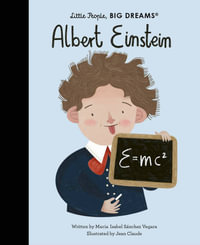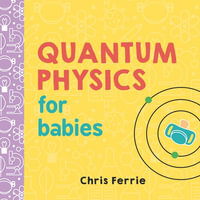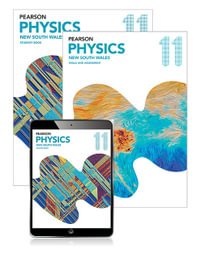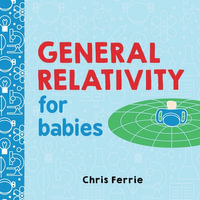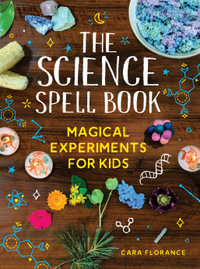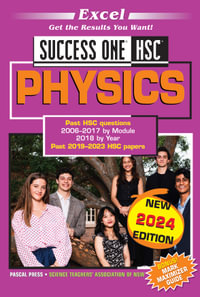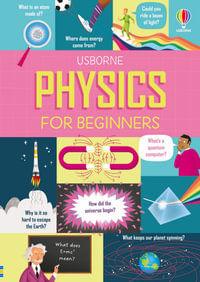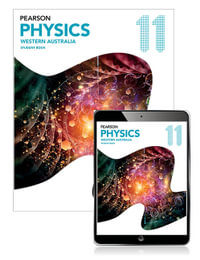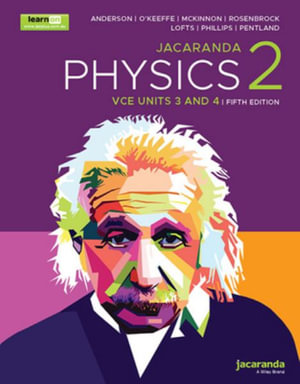
Jacaranda Physics 2 VCE Units 3 and 4, 5e learnON and Print
By: Murray Anderson, Dan O'Keeffe, Barbara McKinnon, Michael Rosenbrock, Graeme Lofts
Paperback | 20 October 2023 | Edition Number 5
At a Glance
Paperback
RRP $90.00
$83.25
When will this arrive by?
About this resource vii
Acknowledgements xiv
Unit 3 How Do Fields Explain Motion and Electricity? 1
Area of Study 1 How do Physicists explain motion in Two Dimensions?
1 Newton’s laws of motion 3
1.1 Overview 4
1.2 BACKGROUND KNOWLEDGE Motion review 5
1.3 Newton’s laws of motion and their application 17
1.4 Projectile motion 28
1.5 Uniform circular motion 44
1.6 Non-uniform circular motion 62
1.7 Review 73
2 Relationships between force, energy and mass 85
2.1 Overview 86
2.2 Momentum and impulse 87
2.3 Work done 98
2.4 Kinetic and potential energy 104
2.5 Review 122
Area of Study 1 Review 133
Practice examination 133
Practice school-assessed coursework 140
Area of Study 2 How Do Things Move Without Contact?
3 Gravitational fields and their applications 143
3.1 Overview 144
3.2 Newton’s Universal Law of Gravitation and the inverse square law 145
3.3 The field model 150
3.4 Motion in gravitational fields, from projectiles to satellites in space 159
3.5 Energy changes in gravitational fields 172
3.6 Review 184
4 Electric fields and their applications 195
4.1 Overview 196
4.2 Coulomb’s Law and electric force 197
4.3 The field model for point-like charges 201
4.4 Electric fields from more than one point-like charge 207
4.5 Uniform electric fields 213
4.6 Energy and motion of charges in electric fields and the linear accelerator 218
4.7 Review 226
5 Magnetic fields and their applications 235
5.1 Overview 236
5.2 Magnets and magnetic fields 237
5.3 Magnetic fields from moving charged particles 244
5.4 Using magnetic fields to control charged particles, cyclotrons and mass spectrometers 255
5.5 Magnetic forces on current-carrying wires 268
5.6 Applying magnetic forces — the DC motor 275
5.7 Similarities and differences between gravitational, electric and magnetic fields 283
5.8 Review 288
Area of Study 2 Review 299
Practice examination 299
Practice school-assessed coursework 305
Area of Study 3 How Are Fields Used in Electricity Generation?
6 Generation of electricity 307
6.1 Overview 308
6.2 BACKGROUND KNOWLEDGE Generating voltage and current with a magnetic field 309
6.3 Magnetic flux 314
6.4 Generating emf from a changing magnetic flux 321
6.5 Generators and alternators 332
6.6 Photovoltaic cells 343
6.7 Review 350
7 Transmission of electricity 365
7.1 Overview 366
7.2 Peak, RMS and peak-to-peak voltages 367
7.3 Transformers 371
7.4 Power distribution and transmission line losses 382
7.5 Review 395
Area of Study 3 Review 405
Practice examination 405
Practice school-assessed coursework 412
Unit 4 How Have Creative Ideas and Investigation Revolutionised Thinking in Physics? 415
Area of Study 1 How Has Understanding About the Physical World Changed?
8 Light as a wave 417
8.1 Overview 418
8.2 Light as a wave 419
8.3 Interference, resonance and standing waves 428
8.4 Diffraction of light 438
8.5 Interference of light 447
8.6 Review 462
9 Light as a particle 473
9.1 Overview 474
9.2 Could light have particle-like properties as well? 475
9.3 The photoelectric effect and experimental data 483
9.4 Limitations of the wave model 501
9.5 Review 505
10 Matter as particles or waves and the similarities between light and matter 517
10.1 Overview 518
10.2 Matter modelled as a type of wave 519
10.3 The diffraction of light and matter 523
10.4 Emission and absorption spectra 532
10.5 Electrons, atoms and standing waves 543
10.6 Review 550
11 Einstein’s special theory of relativity and the relationship between energy and mass 559
11.1 Overview 560
11.2 Einstein’s special theory of relativity 561
11.3 Time dilation 578
11.4 Length contraction 585
11.5 Relativity is real 592
11.6 Einstein’s relationship between mass and energy 597
11.7 Review 609
Area of Study 1 Review 617
Practice examination 617
Practice school-assessed coursework 623
Area of Study 2 How Is Scientific Inquiry Used to Investigate Fields, Motion Or Light?
12 Scientific investigations
12.1 Overview
12.2 Key science skills and concepts in physics
12.3 Accuracy, precision, reproducibility, repeatability and validity of measurements
12.4 Characteristics of scientific methodology and primary data generation
12.5 Health, safety and ethical guidelines
12.6 Ways of organising, analysing and evaluating primary data
12.7 Challenging scientific models and theories
12.8 The limitations of investigation methodology and conclusions
12.9 Conventions of science communication
12.10 Review
Area of Study 2 Review
Practice past VCAA exam questions focused on key science skills.
Appendix 1 Formulae and data 629
Appendix 2 Periodic table 632
Appendix 3 Astronomical data 634
Answers 635
Glossary 690
Index 696
ISBN: 9781119888338
ISBN-10: 1119888336
Series: Jacaranda Physics Series
Published: 20th October 2023
Format: Paperback
Language: English
Number of Pages: 720
Audience: Primary, Secondary and High School
Publisher: John Wiley & Sons Australia
Country of Publication: AU
Edition Number: 5
Dimensions (cm): 28 x 22 x 2.5
Weight (kg): 1.43
Shipping
| Standard Shipping | Express Shipping | |
|---|---|---|
| Metro postcodes: | $9.99 | $14.95 |
| Regional postcodes: | $9.99 | $14.95 |
| Rural postcodes: | $9.99 | $14.95 |
How to return your order
At Booktopia, we offer hassle-free returns in accordance with our returns policy. If you wish to return an item, please get in touch with Booktopia Customer Care.
Additional postage charges may be applicable.
Defective items
If there is a problem with any of the items received for your order then the Booktopia Customer Care team is ready to assist you.
For more info please visit our Help Centre.
